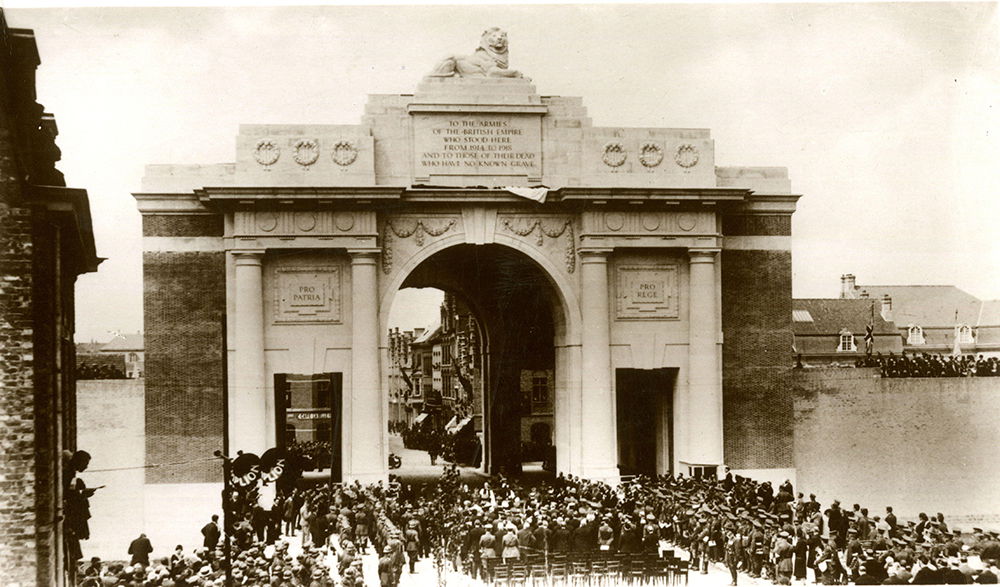The Menin Gate is Unveiled
The finished Menin Gate memorial, unveiled on 24 July 1927, recorded 54,896 British and imperial soldiers who died at Ypres between 1914 and 1918, and whose bodies were lost.

In the beginning, they did not even know how many dead were missing. When architect Reginald Blomfield started on the Menin Gate, a memorial to British and imperial soldiers who died at Ypres between 1914 and 1918 whose bodies were lost, he allowed for 40,000 names. The finished memorial, unveiled on 24 July 1927, recorded 54,896. Another 34,986 are remembered at nearby Tyne Cot.
In all, some 200,000 died defending the small Belgian town. Winston Churchill wanted it bought for Britain and preserved as a ruin. He thought it sacred ground.
He wasn’t alone. When the bereaved visited the battlefields, they called it pilgrimage. Wealthier pilgrims might take the five-day ‘Battlefield Tours de Luxe’ led by ex-officers in ‘high-class motor vehicles’. Alternatively, The Pilgrim’s Guide to the Ypres Salient (1920) included seven suggested tours; the Graves Registration Unit in the town square could locate your loved one’s last resting place, if he had one, among 200 local war cemeteries.
Pilgrims were sometimes shocked by Ypres. As early as 1919 The Times could condemn its ‘mobs of picture-postcard hawkers, of chars-à-bancs and … souvenir hunters’. It was a place where ‘the wounds of war were … a spectacle to be casually appraised between an apéritif and lunch’.
Nevertheless, thousands of pilgrims attended the gate’s unveiling, including 700 mothers and widows funded by charity. Two of them laid a wreath in the official ceremony: one, Caroline Merriman, had two sons, John and Arthur, among the missing; she had been waiting since October 1914 for John’s death to be marked and remembered.
After the speeches, trumpets sounded the Last Post from the ramparts. A minute’s silence was followed by ‘a quite ineffaceable moment when once again the roll of British drums went out from the Menin Gate’, The Times reported. ‘They always make one shudder, those drums. But here, at such a place and in such surroundings, the splendour and the terror of them were beyond words.’